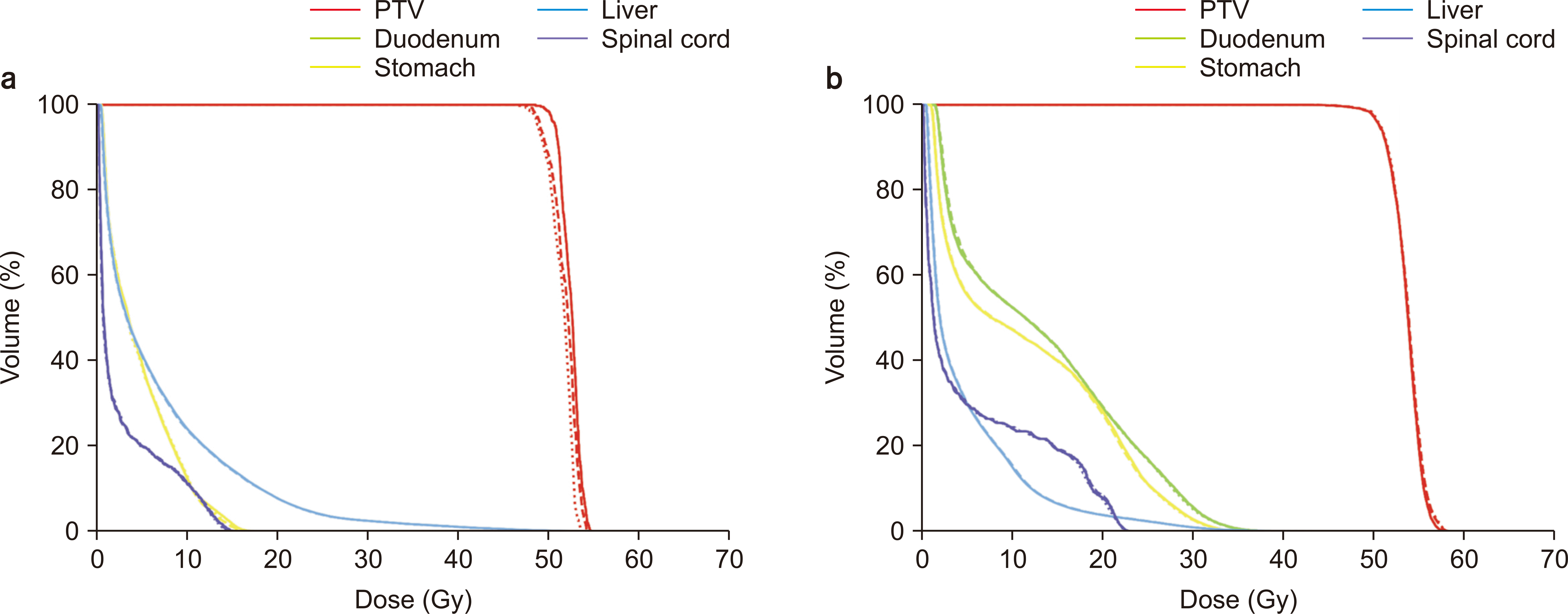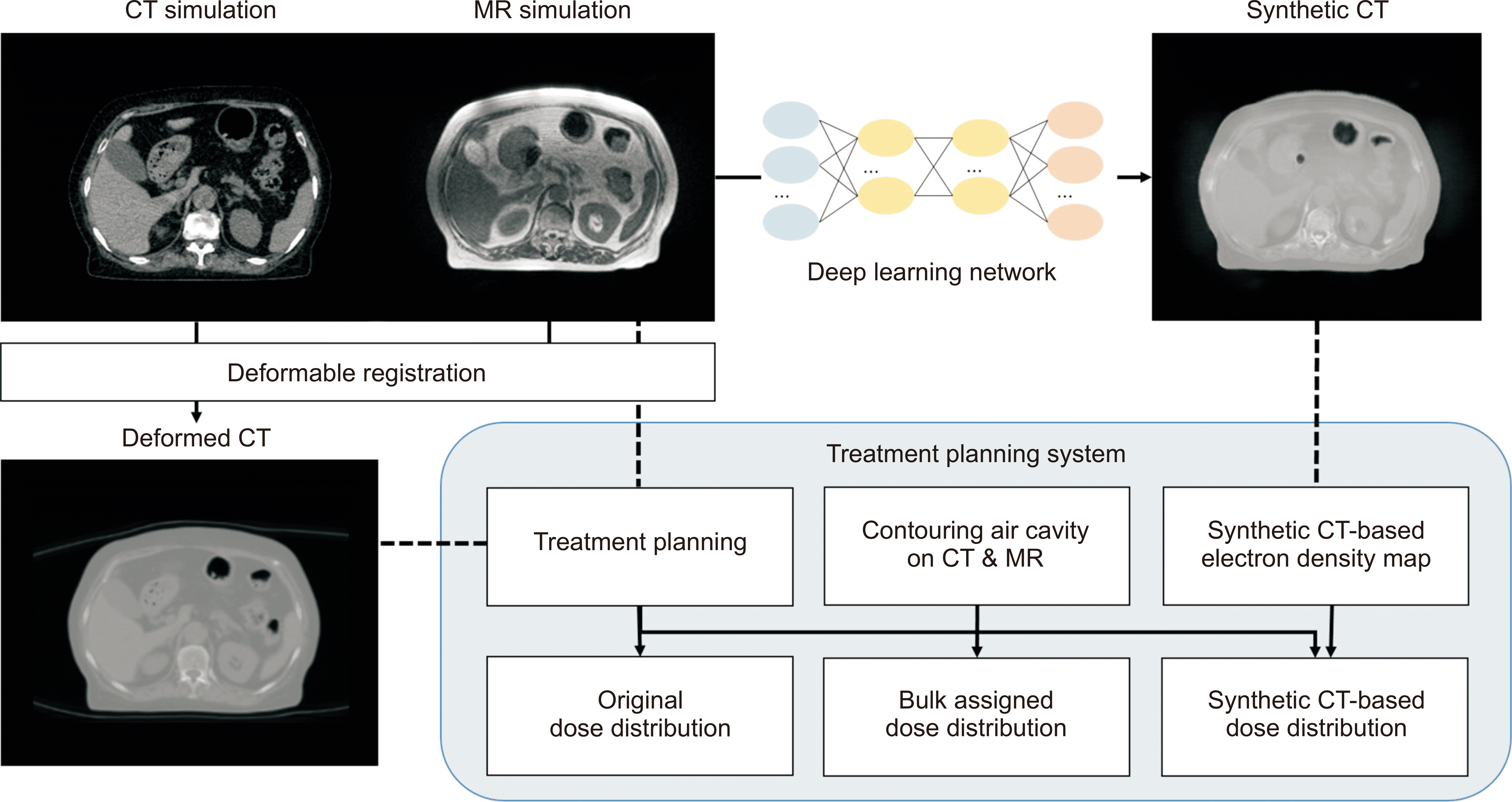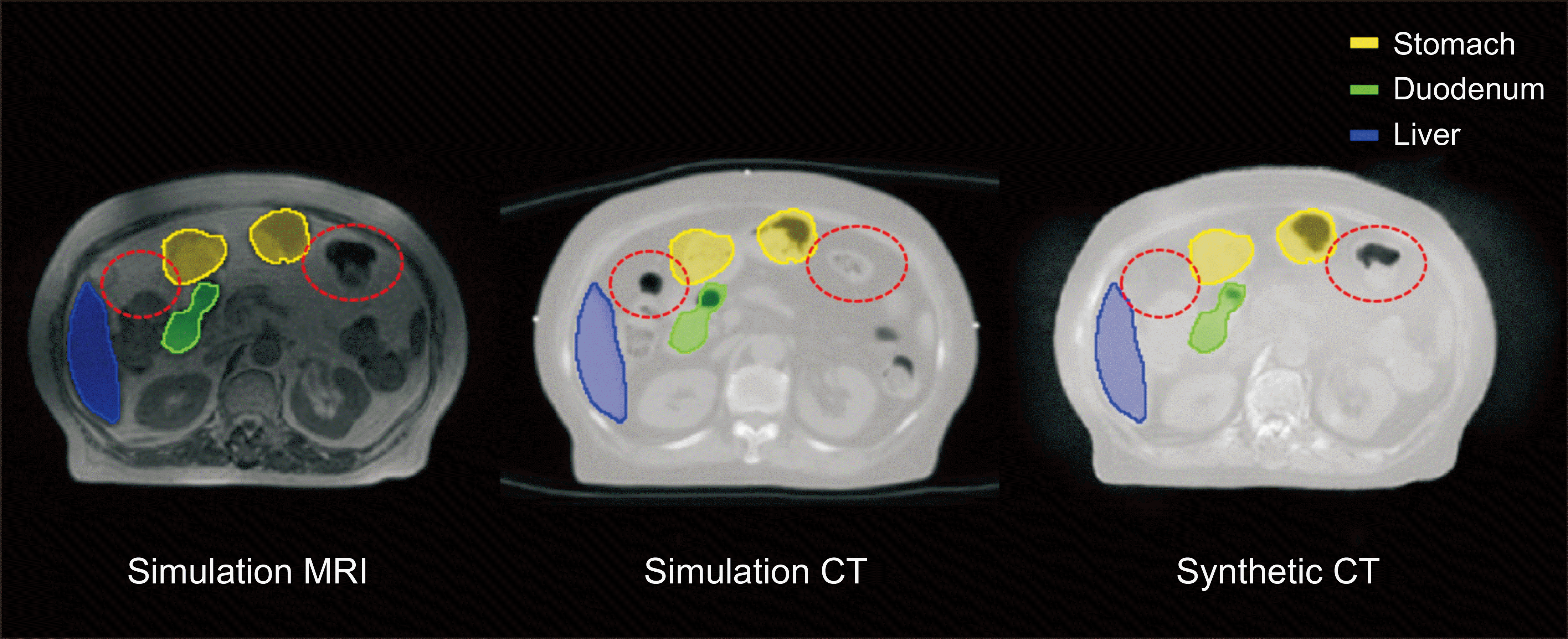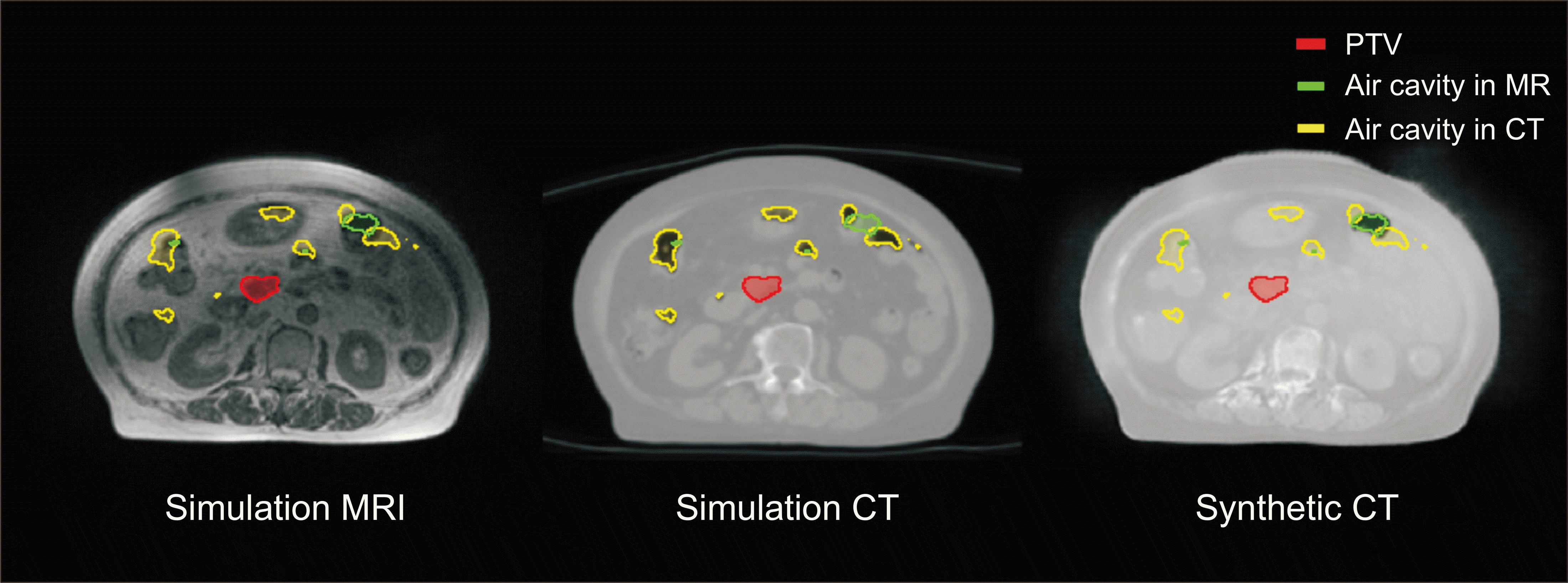1. Lim-Reinders S, Keller BM, Al-Ward S, Sahgal A, Kim A. 2017; Online adaptive radiation therapy. Int J Radiat Oncol Biol Phys. 99:994–1003. DOI:
10.1016/j.ijrobp.2017.04.023. PMID:
28916139.

2. Kurz C, Buizza G, Landry G, Kamp F, Rabe M, Paganelli C, et al. 2020; Medical physics challenges in clinical MR-guided radiotherapy. Radiat Oncol. 15:93. DOI:
10.1186/s13014-020-01524-4. PMID:
32370788. PMCID:
PMC7201982.

3. Hassanzadeh C, Rudra S, Bommireddy A, Hawkins WG, Wang-Gillam A, Fields RC, et al. 2020; Ablative five-fraction stereotactic body radiation therapy for inoperable pancreatic cancer using online MR-guided adaptation. Adv Radiat Oncol. 6:100506. DOI:
10.1016/j.adro.2020.06.010. PMID:
33665480. PMCID:
PMC7897757.

4. Intven MPW, de Mol van Otterloo SR, Mook S, Doornaert PAH, de Groot-van Breugel EN, Sikkes GG, et al. 2021; Online adaptive MR-guided radiotherapy for rectal cancer; feasibility of the workflow on a 1.5T MR-linac: clinical implementation and initial experience. Radiother Oncol. 154:172–178. DOI:
10.1016/j.radonc.2020.09.024. PMID:
32976875.

6. Pollard JM, Wen Z, Sadagopan R, Wang J, Ibbott GS. 2017; The future of image-guided radiotherapy will be MR guided. Br J Radiol. 90:20160667. DOI:
10.1259/bjr.20160667. PMID:
28256898. PMCID:
PMC5605101.

8. Maspero M, Savenije MHF, Dinkla AM, Seevinck PR, Intven MPW, Jurgenliemk-Schulz IM, et al. 2018; Dose evaluation of fast synthetic-CT generation using a generative adversarial network for general pelvis MR-only radiotherapy. Phys Med Biol. 63:185001. DOI:
10.1088/1361-6560/aada6d. PMID:
30109989.

9. Spadea MF, Pileggi G, Zaffino P, Salome P, Catana C, Izquierdo-Garcia D, et al. 2019; Deep convolution neural network (DCNN) multiplane approach to synthetic CT generation From MR images-application in brain proton therapy. Int J Radiat Oncol Biol Phys. 105:495–503. DOI:
10.1016/j.ijrobp.2019.06.2535. PMID:
31271823.

10. Maspero M, Bentvelzen LG, Savenije MHF, Guerreiro F, Seravalli E, Janssens GO, et al. 2020; Deep learning-based synthetic CT generation for paediatric brain MR-only photon and proton radiotherapy. Radiother Oncol. 153:197–204. DOI:
10.1016/j.radonc.2020.09.029. PMID:
32976877.

11. Qi M, Li Y, Wu A, Jia Q, Li B, Sun W, et al. 2020; Multi-sequence MR image-based synthetic CT generation using a generative adversarial network for head and neck MRI-only radiotherapy. Med Phys. 47:1880–1894. DOI:
10.1002/mp.14075. PMID:
32027027.

12. Kang SK, An HJ, Jin H, Kim JI, Chie EK, Park JM, et al. 2021; Synthetic CT generation from weakly paired MR images using cycle-consistent GAN for MR-guided radiotherapy. Biomed Eng Lett. 11:263–271. DOI:
10.1007/s13534-021-00195-8. PMID:
34350052. PMCID:
PMC8316520.

13. Boulanger M, Nunes JC, Chourak H, Largent A, Tahri S, Acosta O, et al. 2021; Deep learning methods to generate synthetic CT from MRI in radiotherapy: a literature review. Phys Med. 89:265–281. DOI:
10.1016/j.ejmp.2021.07.027. PMID:
34474325.

14. Kataria T, Sharma K, Subramani V, Karrthick KP, Bisht SS. 2012; Homogeneity Index: an objective tool for assessment of conformal radiation treatments. J Med Phys. 37:207–213. DOI:
10.4103/0971-6203.103606. PMID:
23293452. PMCID:
PMC3532749.

16. Iglewicz B, Hoaglin DC. 1993. How to detect and handle outliers. ASQC Quality Press;Milwaukee:
17. Boldrini L, Cusumano D, Cellini F, Azario L, Mattiucci GC, Valentini V. 2019; Online adaptive magnetic resonance guided radiotherapy for pancreatic cancer: state of the art, pearls and pitfalls. Radiat Oncol. 14:71. DOI:
10.1186/s13014-019-1275-3. PMID:
31036034. PMCID:
PMC6489212.

18. Jin H, Kim DY, Park JM, Kang HC, Chie EK, An HJ. 2019; Dosimetric effects of air pocket during magnetic resonance-guided adaptive radiation therapy for pancreatic cancer. Prog Med Phys. 30:104–111. DOI:
10.14316/pmp.2019.30.4.104.

19. Michalet M, Bordeau K, Cantaloube M, Valdenaire S, Debuire P, Simeon S, et al. 2022; Stereotactic MR-guided radiotherapy for pancreatic tumors: dosimetric benefit of adaptation and first clinical results in a prospective registry study. Front Oncol. 12:842402. DOI:
10.3389/fonc.2022.842402. PMID:
35356227. PMCID:
PMC8959839.

20. Werensteijn-Honingh AM, Kroon PS, Winkel D, Aalbers EM, van Asselen B, Bol GH, et al. 2019; Feasibility of stereotactic radiotherapy using a 1.5 T MR-linac: multi-fraction treatment of pelvic lymph node oligometastases. Radiother Oncol. 134:50–54. DOI:
10.1016/j.radonc.2019.01.024. PMID:
31005224.

21. Bohoudi O, Bruynzeel AME, Senan S, Cuijpers JP, Slotman BJ, Lagerwaard FJ, et al. 2017; Fast and robust online adaptive planning in stereotactic MR-guided adaptive radiation therapy (SMART) for pancreatic cancer. Radiother Oncol. 125:439–444. DOI:
10.1016/j.radonc.2017.07.028. PMID:
28811038.






 PDF
PDF Citation
Citation Print
Print






 XML Download
XML Download